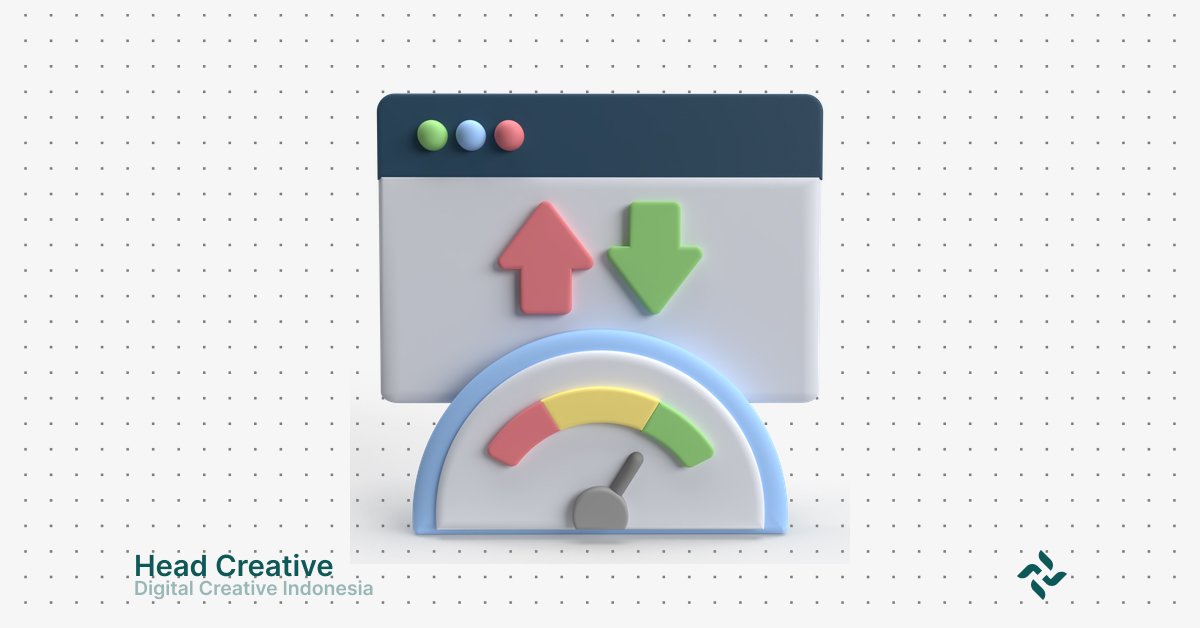Understanding SEO Sprint: What Makes It Different?
In the dynamic world of digital marketing, SEO remains an indispensable strategy. However, the emergence of the SEO Sprint concept offers a more focused and efficient way to achieve results. What is SEO Sprint, and why is this approach gaining popularity? Let’s delve deeper.
What is SEO Sprint?
SEO Sprint is an intensive and structured approach to SEO optimization within a short timeframe. Instead of spreading SEO efforts over a long period, SEO Sprint concentrates resources and energy into a specific period—often just a few weeks.
Key Characteristics:
- Short Duration: Typically lasts between 1 to 4 weeks.
- Specific Goals: Focuses on particular improvements, such as enhancing keyword performance, fixing website speed, or producing strategic new content.
- Organized Method: Involves detailed planning, rapid execution, and immediate evaluation.
With this format, SEO Sprint becomes an ideal solution for businesses needing tangible results quickly without compromising quality.
Comparison Between SEO Sprint and Traditional SEO Strategies
What sets SEO Sprint apart from traditional SEO strategies? Here’s a comparison:
| Aspect | SEO Sprint | Traditional SEO |
|---|---|---|
| Duration | Short (1–4 weeks) | Long-term (months to years) |
| Approach | Focused on specific tasks | Holistic approach |
| Speed of Results | Fast, typically within weeks | Slow but sustained |
| Resource Requirements | Intensive during the sprint | Steady but requires ongoing commitment |
SEO Sprint is perfect for urgent needs, such as launching a new product or fixing technical issues affecting rankings. On the other hand, traditional SEO strategies are better suited for building a strong digital presence over the long term.
Relevance of SEO Sprint for Different Business Types
SEO Sprint is not just a trendy strategy—it’s relevant for a variety of businesses. Here are some examples:
- Startups or Small Businesses:
With limited resources, startups can use SEO Sprint to achieve specific targets efficiently, such as increasing visibility for a product page during a promotional campaign. - E-commerce:
Online businesses often face intense competition, especially during shopping seasons. SEO Sprint helps highlight top product pages or improve the performance of specific categories. - Consultants and Freelancers:
For professionals offering SEO services, SEO Sprint is an effective way to demonstrate results to clients in a short period. - Large Companies:
Even established companies can leverage SEO Sprint to accelerate special campaigns, such as launching a new app or enhancing local SEO.
Why is SEO Sprint Worth Trying?
SEO Sprint provides quick solutions without sacrificing effectiveness. With the right strategy, your business can experience immediate impacts in visibility, traffic, and conversions. However, it’s important to remember that SEO Sprint is not a replacement for traditional SEO strategies—it’s a complement that can significantly boost your results.
Benefits of SEO Sprint: Why It’s the Right Solution for Your Business
In the fast-paced world of digital marketing, speed and focus are often the keys to success. SEO Sprint offers both, enabling businesses to achieve significant results in a short time. But what are the main benefits of this approach? Let’s explore further.
1. Time Efficiency: Quick Results in a Short Timeframe
One of the main attractions of SEO Sprint is its ability to deliver results faster than traditional SEO strategies. Instead of waiting months to see the impact of SEO optimization, this method enables visible changes in just weeks.
Why is time efficiency important?
- Urgent Business Needs: For example, when you need to drive traffic for a product launch or seasonal campaign.
- Adapting Quickly to Trends: SEO Sprint helps you respond promptly to market trends or Google algorithm updates.
- Maximizing Resources: With a clear timeline, teams can focus on tasks that generate the greatest impact.
2. Focus on Key SEO Priorities
SEO Sprint is designed to concentrate on priorities that truly matter and deliver tangible results. This approach eliminates distractions often associated with long-term SEO strategies.
What are the key priorities in SEO?
- Technical Improvements: Address issues like website speed, broken links, or URL structure.
- Content Optimization: Create or update content targeting relevant keywords.
- UX Enhancements: Ensure the website is easy to navigate and mobile-friendly.
- Link Building: Build high-quality backlinks from trusted sources.
Advantages of this focused approach:
- Enhances the effectiveness of your SEO efforts.
- Helps the team concentrate on high-ROI tasks.
- Reduces wasted time and resources on less impactful activities.
3. Boosts Marketing Team Productivity
SEO Sprint not only delivers results but also positively impacts the team working on it. A clear structure and tight deadlines foster a productive environment.
How does SEO Sprint enhance team productivity?
- Better Collaboration: Every team member knows what to do and when tasks need to be completed.
- High Motivation: Short deadlines keep the team motivated and driven to complete tasks.
- Measurable Results: Once the sprint is over, the team can immediately see their impact, encouraging further growth.
Tips for a successful SEO Sprint team:
- Set realistic and specific goals.
- Use project management tools like Trello or Asana to organize tasks.
- Evaluate sprint results transparently for future improvement.
Read More: The Difference Between White Hat SEO and Black Hat SEO: A Complete Guide
Steps to Conduct an SEO Sprint
Implementing an SEO Sprint requires a clear strategy and focused execution. When done correctly, this approach can deliver outstanding results in a short amount of time. Here’s a step-by-step guide to successfully carrying out an SEO Sprint.
1. Initial Analysis: SEO Audit and Target Setting
Before starting an SEO Sprint, the first step is conducting an in-depth analysis of your current SEO performance. This stage aims to identify strengths, weaknesses, and opportunities.
Steps in the initial analysis:
- Website Technical Audit: Use tools like Screaming Frog or Google Search Console to check loading speed, URL structure, meta tags, and broken links.
- Content Analysis: Identify low-performing pages, keyword gaps, and opportunities to improve content relevance.
- Competitor Monitoring: Study competitor strategies using tools like Ahrefs or SEMrush to uncover actionable gaps.
- Target Setting: Define specific goals for the sprint, such as improving rankings for particular keywords or increasing CTR (Click-Through Rate).
2. Strategy Development Based on Data and Research
After completing the analysis, the next step is crafting a data-driven strategy. This strategy should be clear, measurable, and focused on high-priority actions.
How to create an effective strategy:
- Choose Priority Keywords: Focus on keywords with high search volume and realistic competition levels.
- Define Key Tasks: For example, optimizing underperforming pages with high potential.
- Set a Sprint Schedule: Break tasks into daily or weekly activities to ensure the team works in sync.
- Select Support Tools: Use tools like Google Analytics, Surfer SEO, or Rank Math to monitor progress and facilitate implementation.
Tips: Ensure your strategy is realistic and aligns with available resources, including time, personnel, and budget.
3. Focused Execution Within a Specific Timeframe (e.g., 10 Days)
The execution phase is the heart of an SEO Sprint. During this period, the team works intensively to complete the planned tasks.
Key elements of execution:
- Team Collaboration: Ensure all team members—SEO, content, and technical—work in harmony.
- Prioritize High-Impact Tasks: Focus on technical fixes, content optimization, and link-building tactics that yield significant results.
- Monitor Progress in Real-Time: Use dashboards to track progress and identify obstacles.
Examples of tasks to perform during a sprint:
- Optimize metadata to improve CTR.
- Add internal links to enhance user navigation.
- Create new articles targeting high-opportunity keywords.
- Improve page speed for better user experience.
4. Evaluate Results and Ensure Continuous Optimization
Once the sprint is complete, the final step is evaluating the results to understand what worked and what needs improvement. This stage is crucial for maximizing long-term impact.
Steps for evaluation:
- Performance Analysis: Use Google Analytics and Google Search Console to review changes in rankings, traffic, and other key metrics.
- Team Feedback: Discuss what went well and the challenges faced during the sprint.
- Identify New Opportunities: Leverage data from the sprint to plan the next steps.
- Document Results: Save all findings and lessons learned as references for future sprints.
Take Advantage of Our Services: SEO Solutions for Your Business
When and Who Should Use SEO Sprint?
Not every marketing strategy suits every situation or type of business, each with its own unique relevance and application. So, when is the best time to use SEO Sprint, and who can benefit the most from this approach? Let’s explore in detail.
Situations Where SEO Sprint is Relevant
SEO Sprint is the perfect solution for urgent or specific needs. Here are some scenarios where this approach is highly relevant:
1. Launching a New Product
When launching a new product, online visibility is crucial to attract potential customers.
- How SEO Sprint Helps: It optimizes product pages with relevant keywords, improving search engine rankings quickly.
- Example: A tech startup launching a new app can use SEO Sprint to create an optimized landing page and attract traffic from the start.
2. Seasonal Campaigns
For campaigns like year-end promotions, national online shopping days, or Black Friday, SEO Sprint allows you to focus on seasonal keywords and promotional content.
- How SEO Sprint Helps: It ensures you fully capitalize on seasonal momentum.
- Example: An online store selling Christmas decorations uses SEO Sprint to boost visibility for its Christmas product category in December.
3. Fixing Urgent SEO Issues
If your website faces traffic drops due to technical issues or Google penalties, SEO Sprint can help resolve these problems quickly.
- Focus Areas: Website speed, internal link structure, or missing metadata.
4. Preparing for Major Events
SEO Sprint is also relevant for supporting big events like webinars, conferences, or trade shows.
- How SEO Sprint Helps: Ensures event pages gain maximum exposure.
Types of Businesses That Benefit Most
While SEO Sprint can be applied to almost any business, some types of businesses benefit more significantly. Here are the categories that gain the most:
1. E-commerce
Online stores often face intense competition in the digital market. SEO Sprint helps optimize product categories, increase conversions, and target relevant keywords.
- Focus Areas: Seasonal promotions or spotlighting featured products.
- Example: An e-commerce platform focusing on winter fashion can use SEO Sprint to boost rankings for its winter category in just a few weeks.
2. Service-Based Businesses
Service-oriented businesses like consultants, agencies, or professional services can use SEO Sprint to increase visibility in specific geographic areas or for specific services.
- How SEO Sprint Helps: Quickly dominate local search results.
- Example: A law firm uses SEO Sprint to improve rankings for local searches like “best legal services in Jakarta.”
3. Content-Based Businesses
Blogs, news portals, or educational websites can leverage SEO Sprint to produce high-quality content optimized for trending keywords.
- How SEO Sprint Helps: Drives significant organic traffic in a short time.
- Example: A tech blog uses SEO Sprint to create articles on trending topics like “generative AI,” resulting in a traffic surge.
Conclusion
SEO Sprint is a revolutionary approach to search engine optimization. With its focus, intensity, and time efficiency, this method delivers tangible results in the short term without sacrificing quality.
Key Takeaways from This Article:
- Definition: An intensive strategy designed to address specific SEO needs in a short period, making it an ideal solution for urgent requirements.
- Benefits: From time efficiency to improved team productivity, SEO Sprint offers numerous advantages that can significantly enhance your digital performance.
- Steps: The process involves in-depth analysis, data-driven strategy development, focused execution, and continuous evaluation for optimal results.
- When and Who: SEO Sprint is highly relevant for product launches, seasonal campaigns, or businesses such as e-commerce, services, and content.


